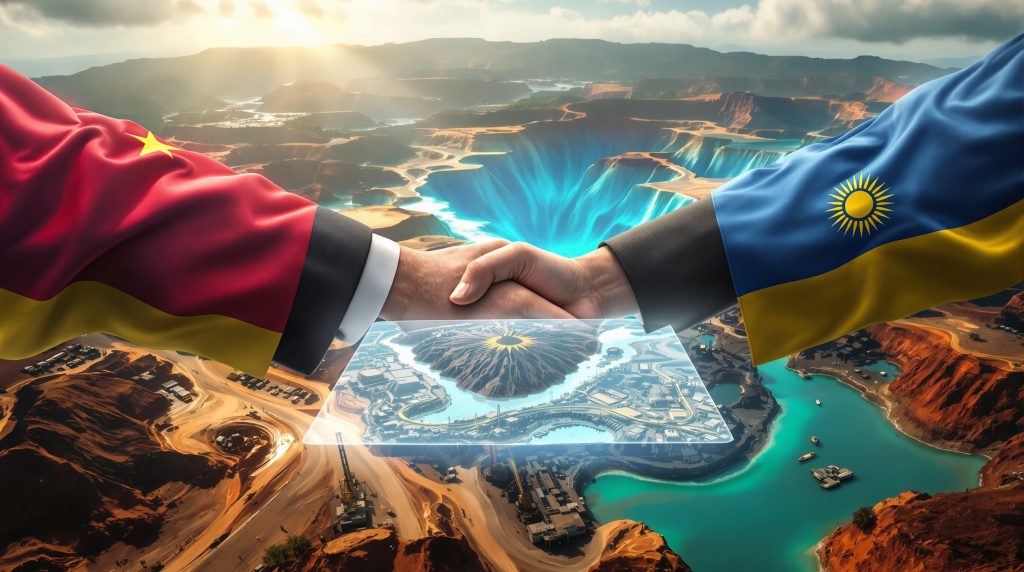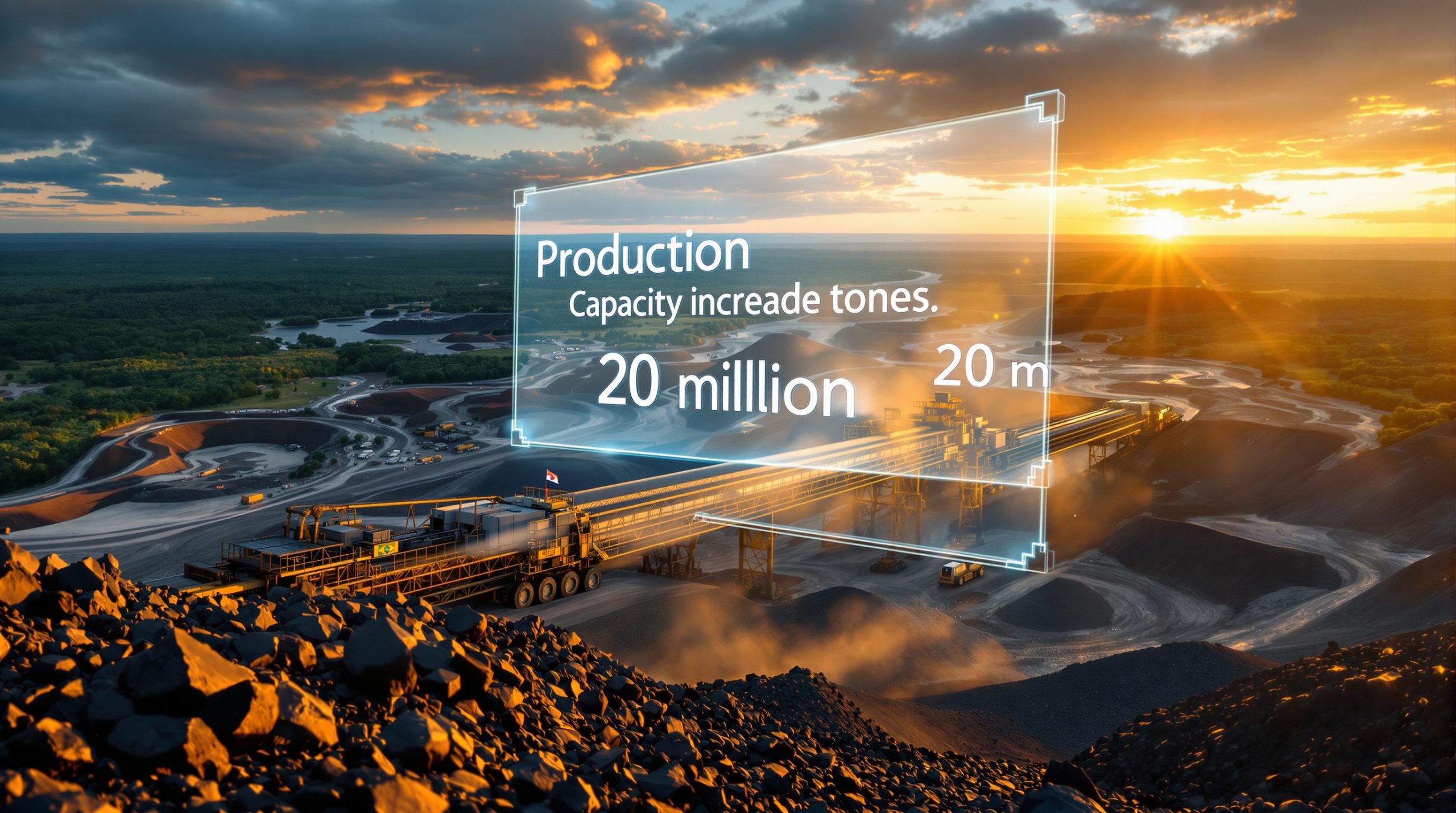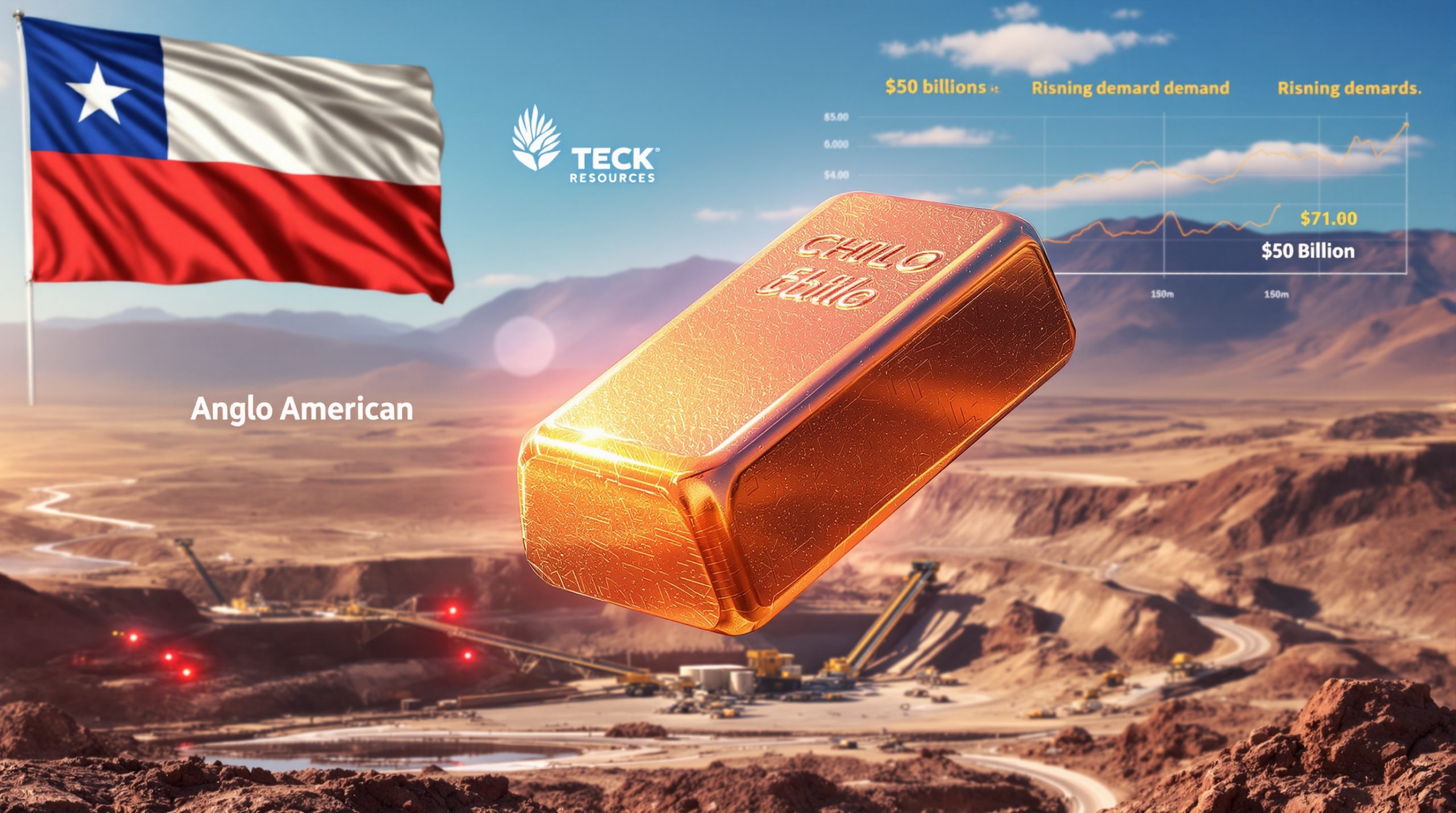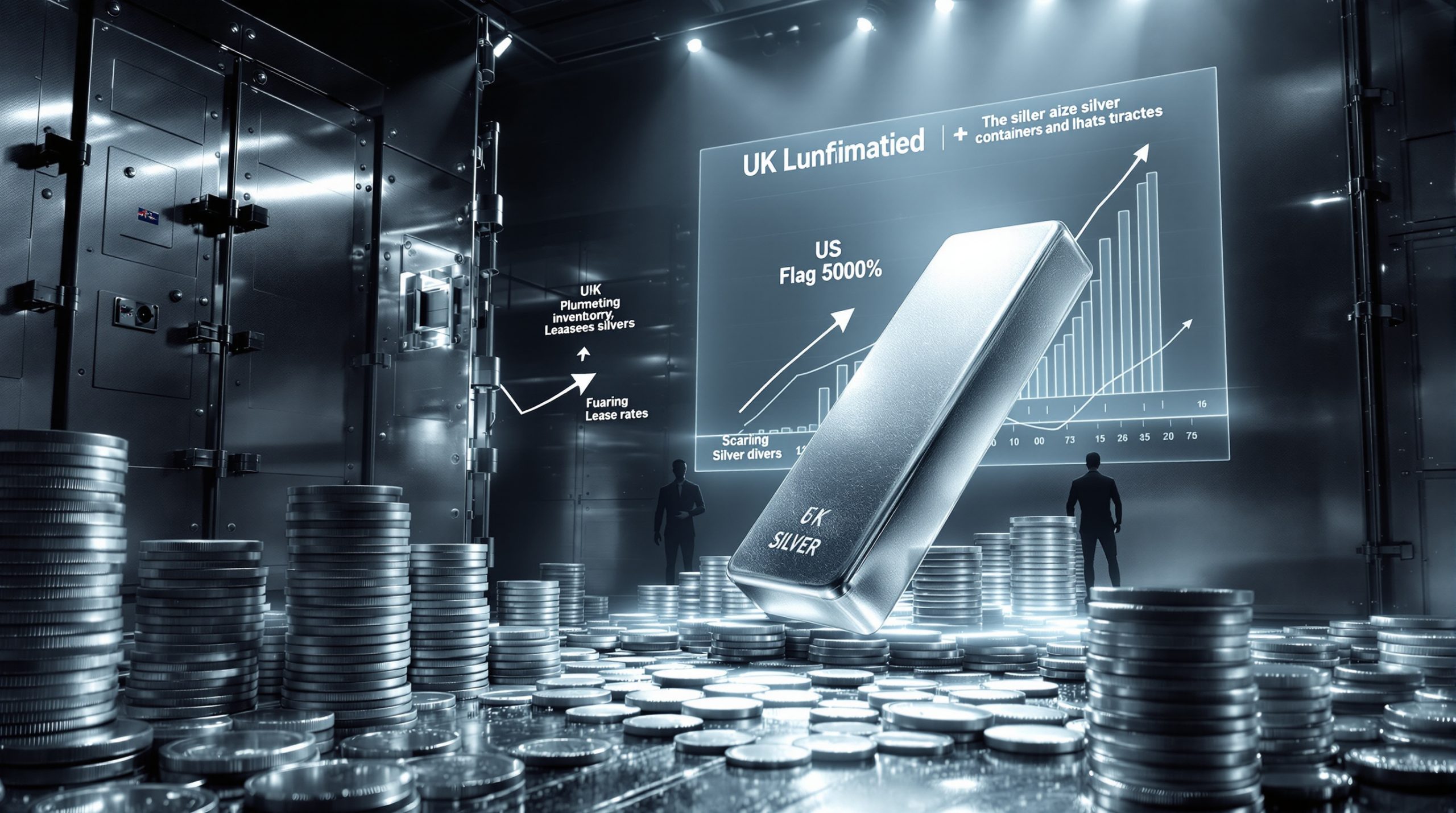ERG's Settlement with Gécamines: Resolving the DRC Swanmines Project Dispute
The copper and cobalt mining landscape in the Democratic Republic of Congo (DRC) has seen a significant development with Eurasian Resources Group (ERG) announcing a settlement with state-owned Gécamines. This agreement, reached during Congolese President Felix Tshisekedi's diplomatic visit to Kazakhstan in September 2025, resolves a dispute that had halted development of critical minerals energy transition deposits and establishes a new framework for the Swanmines project going forward.
What Led to the Dispute Between ERG and Gécamines?
The origins of the conflict between ERG and Gécamines can be traced to fundamental disagreements over project development, financial commitments, and operational control of the strategically important Swanmines copper-cobalt project in DRC's mineral-rich Katanga Province.
Historical Context of the Swanmines Project
The Swanmines project represents one of several significant mineral assets within ERG's substantial DRC portfolio. Located in Katanga Province, the region hosts some of the world's richest copper-cobalt deposits, with grades significantly higher than global averages. These high-grade deposits make the project particularly valuable in the global transition to renewable energy and electric vehicles, where cobalt plays a critical role in battery technology.
Initially structured as a joint venture consolidation between ERG (operating through its subsidiary Africo Resources) and state-owned Gécamines, the project was positioned to contribute substantially to DRC's mineral production capacity. However, development progress stalled in 2023 when relations between the partners deteriorated over various operational and investment concerns.
The project's significance extends beyond its economic value to both companies. For DRC, Swanmines represents an important source of potential employment, tax revenue, and economic development in a region heavily dependent on the mining sector. For ERG, it forms part of a broader investment portfolio that has seen the company invest more than $9 billion in Congo since 2009.
Key Points of Contention
The dispute that eventually led to arbitration proceedings in 2023 centered around several critical issues:
-
Development timelines: Disagreements over project advancement schedules and milestone achievements became increasingly contentious as the parties held different views on appropriate development pacing.
-
Investment obligations: Questions arose regarding capital commitment levels, particularly as global economic conditions and commodity markets experienced volatility.
-
Operational control: Management structure and decision-making authority became points of friction between the partners.
-
Local content requirements: DRC's stringent subcontracting laws, which require foreign companies to work with local firms, reportedly created additional tension.
-
Resource governance: Debates over how the mineral resources would be extracted, processed, and marketed highlighted fundamental differences in approach.
These unresolved issues ultimately led to the suspension of development activities at some copper and cobalt deposits, taking a promising project offline at a time when surging copper demand was rising significantly.
How Did the Settlement Come About?
The resolution of the dispute involved a combination of diplomatic efforts, legal proceedings, and high-level negotiations that ultimately led to the September 2025 settlement announcement.
Diplomatic Intervention and High-Level Negotiations
The breakthrough in resolving the longstanding dispute came during Congolese President Felix Tshisekedi's official visit to Kazakhstan in September 2025. This high-level diplomatic engagement provided the necessary political framework for the companies to finalize their agreement.
Presidential involvement in mining disputes has become increasingly common in resource-rich African nations, reflecting the strategic importance of mineral assets to national economies. The Tshisekedi administration has shown particular interest in resolving conflicts that impede development in Congo's mining sector, which accounts for approximately 30% of the country's GDP.
The timing of the settlement also coincided with growing global pressure to secure critical mineral supply chains, particularly for metals essential to the energy transition like copper and cobalt. With Congo holding approximately 70% of the world's cobalt reserves, ensuring continued development of projects like Swanmines has taken on geopolitical significance.
Legal Framework and Arbitration Process
Before reaching a negotiated settlement, the dispute had been formally submitted to the International Chamber of Commerce (ICC) arbitration court in Paris in 2023. This legal mechanism provided a structured environment for addressing the complex issues at stake while offering both parties:
- A neutral forum for presenting their positions
- International legal expertise in mining joint ventures
- A framework for evaluating competing claims
- Potential for binding resolution if negotiations failed
The arbitration process likely created incentives for both parties to consider compromise positions rather than risk an unfavorable ruling. While the specific deliberations remain confidential, the eventual settlement suggests that both ERG and Gécamines found sufficient common ground to justify withdrawing from the formal arbitration process.
The transition from contentious legal proceedings to a negotiated settlement represents a significant achievement for both parties, potentially saving years of costly litigation while allowing the project to move forward.
What Does the Settlement Agreement Include?
While specific financial terms and percentages remain undisclosed, the settlement establishes fundamental changes to the project's structure and governance.
New Framework for Project Development
According to the limited public information available, the settlement agreement establishes a comprehensive framework for advancing the Swanmines project. This framework likely addresses several key aspects:
- Project timeline: New development milestones and deadlines for bringing the deposits into production
- Investment commitments: Updated capital expenditure requirements from both partners
- Operational parameters: Technical specifications for mine development and processing facilities
- Environmental compliance: Standards and monitoring mechanisms aligned with DRC regulations
- Community engagement: Protocols for working with local communities and stakeholders
Mining industry analysts suggest the framework would need to address practical challenges specific to the Katanga region, including infrastructure limitations, power supply concerns, and logistics for moving products to market. The settlement likely includes specific provisions on how these challenges will be addressed and financed.
Expanded Role for Gécamines
A central feature of the settlement is the expansion of Gécamines' participation in the Swanmines project. While the precise nature of this expanded role wasn't detailed in public announcements, it likely involves:
- Equity adjustments: Potential changes to ownership percentages or profit-sharing arrangements
- Management representation: Greater voice in operational decision-making
- Technical involvement: Enhanced participation in project development and mining operations
- Value chain participation: Potential role in downstream processing activities
This expanded participation aligns with broader trends in DRC's mining sector, where the government has sought to increase domestic benefits from mineral extraction through greater state participation, local content requirements, and value addition within the country.
For Gécamines, securing an enhanced position in a project with ERG's financial backing represents a significant win, potentially allowing the state miner to leverage private capital while maintaining greater control over national resources. For ERG, accommodating these demands may have been the necessary price for unlocking the value of their significant prior investments in the country.
What Are the Implications for Congo's Mining Sector?
The settlement between ERG and Gécamines could have far-reaching consequences for Congo's mining industry, potentially influencing other operations and investor relationships.
Impact on DRC's Copper and Cobalt Production
The resolution of the Swanmines dispute removes a significant barrier to expanding DRC's copper and cobalt output. While specific production targets haven't been publicly disclosed, the project has the potential to:
- Add meaningful capacity to DRC's annual copper production (currently around 1.8 million tonnes)
- Increase cobalt output, reinforcing Congo's dominant position in global supply
- Generate export revenue critical to the national economy
- Create substantial direct and indirect employment opportunities
The timing of this production increase could prove particularly significant as global demand for copper continues to grow with the expansion of renewable energy infrastructure and electric vehicle production. Industry forecasts suggest that copper demand could outstrip supply by 2030 without significant new production coming online, making projects like Swanmines increasingly valuable.
For cobalt markets, additional DRC production would further cement the country's position as the world's primary supplier, potentially influencing global pricing dynamics and supply chain security considerations.
Precedent for State-Foreign Investor Relations
Perhaps more significant than the immediate production impact is the precedential value of this settlement for other mining operations in DRC. The agreement establishes several important signals:
-
Negotiated solutions are possible: The shift from formal arbitration to a negotiated settlement demonstrates that even complex disputes can be resolved through good-faith negotiation.
-
State participation expectations: The expanded role for Gécamines likely reflects DRC's broader expectations for state involvement in mining projects.
-
Investment protection parameters: The settlement establishes boundaries for how investor rights will be balanced against state interests.
-
Diplomatic pathways: The role of high-level diplomatic engagement suggests a model for resolving similar disputes.
Mining companies operating in DRC will likely study this settlement closely to understand how it might influence their own relationships with government entities. The agreement could serve as a template for resolving other disputes or renegotiating existing agreements to align with evolving expectations.
What Does This Mean for ERG's DRC Operations?
The settlement has significant implications for ERG's broader presence in Congo, potentially stabilizing its investment portfolio while establishing new parameters for its relationship with state entities.
ERG's Investment Portfolio in DRC
ERG has maintained a substantial presence in Congo since 2009, with investments totaling more than $9 billion across multiple projects. This financial commitment ranks ERG among the largest foreign investors in Congo's mining sector.
The company's DRC portfolio includes:
- The Boss Mining copper-cobalt operation
- The Frontier Mine copper project
- The Comide copper-cobalt operation
- The Metalkol RTR facility, which processes tailings to recover copper and cobalt
These operations collectively position ERG as a major player in Congo's mining sector, with the Swanmines project representing an important component of its growth strategy. The settlement allows ERG to move forward with development plans that had been suspended during the dispute, potentially unlocking significant value from previous investments.
The resolution also helps secure ERG's position in the increasingly competitive global mining landscape insights, where control of high-quality deposits has become a strategic priority for many mining companies and downstream manufacturers.
Financial and Operational Outlook
While the settlement undoubtedly involves financial concessions from ERG, the agreement provides greater certainty for planning and operational purposes. Industry analysts suggest several potential benefits:
-
Reduced legal costs: Resolving the dispute avoids potentially years of expensive arbitration proceedings.
-
Project advancement: Development activities can resume, moving the project toward revenue generation.
-
Risk mitigation: Improved relations with Gécamines may reduce political risk across ERG's DRC portfolio.
-
Market positioning: Securing access to these resources strengthens ERG's position in global copper and cobalt markets.
The settlement also enables ERG to progress with integrating Swanmines into its broader operational footprint in DRC, potentially creating synergies with existing projects and infrastructure. This integration could yield cost efficiencies and operational advantages that enhance the project's economics.
How Does This Settlement Affect Global Copper and Cobalt Markets?
The resolution of the Swanmines dispute has implications beyond the immediate parties, potentially influencing global metal markets and supply chain dynamics.
Supply Chain Implications
The copper and cobalt markets have been characterized by growing concern about future supply adequacy, particularly as demand from electric vehicle manufacturers, renewable energy developers, and electronics producers continues to expand. In this context, the resumption of development at Swanmines has several important implications:
-
Supply security: Additional production capacity helps address concerns about potential copper and cobalt shortages.
-
Geographic concentration: The settlement reinforces Congo's central role in global cobalt supply chains, where it already accounts for approximately 70% of production.
-
Critical material availability: As both copper and cobalt appear on various national critical mineral lists, including those of the United States and European Union, increased production capacity supports industrial policy objectives in major economies.
-
Value chain development: The expanded role for Gécamines could potentially advance DRC's ambitions to capture more value from its mineral resources through increased local processing.
Battery manufacturers and electric vehicle producers will likely view the settlement positively, as it suggests progress toward expanding supplies of essential materials. However, the continued concentration of cobalt production in DRC also reinforces incentives for developing alternative battery chemistries that reduce dependence on this particular material.
Market Response and Investor Sentiment
While immediate market reaction to the settlement announcement was muted, industry analysts suggest several longer-term implications:
-
Investor confidence: Successful resolution of the dispute may improve investor perception of DRC's mining sector.
-
Risk assessment: The case provides a data point for evaluating political and regulatory risk in Congo.
-
Project valuation: The settlement terms, once fully disclosed, may influence how similar assets are valued.
-
Partnership models: The expanded role for Gécamines could influence how future mining industry evolution shapes joint ventures.
The settlement demonstrates that even complex disputes in challenging jurisdictions can reach resolution, potentially encouraging investment in other promising but politically complex mining regions.
What Challenges Remain for the Swanmines Project?
Despite the settlement's positive implications, significant hurdles remain before the Swanmines project can realize its full potential.
Implementation Hurdles
Developing a major mining project in DRC involves navigating numerous technical, logistical, and operational challenges:
-
Infrastructure limitations: Power supply inconsistency, road quality issues, and logistics bottlenecks could impede development timelines.
-
Technical complexity: The metallurgical properties of copper-cobalt deposits can present processing challenges requiring specialized solutions.
-
Environmental compliance: Meeting modern environmental standards in a historically underregulated region requires significant investment and expertise.
-
Workforce development: Building and maintaining a skilled local workforce necessitates substantial training and development programs.
-
Supply chain management: Securing equipment, materials, and services in a remote location with limited infrastructure presents ongoing operational challenges.
The success of the project will depend on how effectively these practical challenges are addressed within the new partnership framework established by the settlement.
Geopolitical and Economic Factors
Beyond project-specific challenges, broader contextual factors will influence the Swanmines project's development:
-
Political stability: While President Tshisekedi's involvement signals high-level support, DRC's political landscape remains complex and potentially volatile.
-
Commodity price volatility: The project's economics will be influenced by copper and cobalt price movements, which have shown significant historical volatility.
-
Global economic conditions: Access to capital, equipment, and technical expertise depends partly on broader economic trends.
-
International relations: The evolving relationship between Kazakhstan (ERG's home country) and DRC will provide important context for the project.
-
Regulatory evolution: DRC's mining regulations continue to develop, with potential implications for operational requirements and fiscal terms.
These external factors create an operating environment characterized by both opportunity and uncertainty, requiring adaptive management and continued engagement with stakeholders at local, national, and international levels.
FAQ: ERG-Gécamines Settlement
What was the core dispute between ERG and Gécamines?
The conflict centered on fundamental disagreements regarding development timelines, investment obligations, operational control, and resource governance for the Swanmines copper-cobalt project. These disagreements culminated in formal arbitration proceedings at the International Chamber of Commerce in Paris in 2023, with development activities at some deposits suspended during the dispute.
The specific trigger points for the dispute weren't publicly disclosed, but industry observers note that such conflicts often arise when joint venture partners' expectations diverge regarding development pacing, capital allocation, or management approach. The dispute occurred against a backdrop of evolving regulatory expectations in DRC, including strengthened requirements for local participation and domestic value addition.
How significant is the Swanmines project to DRC's mining sector?
The Swanmines project represents a potentially substantial addition to DRC's copper and cobalt production capacity. Congo already ranks as Africa's leading copper producer and supplies approximately 70% of global cobalt, positioning the country as an essential source of critical minerals for the global energy transition.
Beyond its direct production potential, the project carries significance as an indicator of DRC's ability to resolve investment disputes and advance development of its mineral resources. As the country seeks to maximize benefits from its vast mineral endowment, projects like Swanmines serve as important test cases for balancing national interests with investor requirements.
The project also demonstrates the ongoing importance of traditional mining companies in developing critical mineral resources, even as attention increasingly focuses on recycling, alternative materials, and circular economy approaches.
What precedent does this settlement set for other mining disputes?
The ERG-Gécamines settlement establishes several important precedents that could influence other mining disputes in DRC and potentially beyond:
-
Diplomatic engagement: The role of high-level diplomatic channels in facilitating resolution suggests a model for addressing similar conflicts.
-
State participation: The expanded role for Gécamines indicates evolving expectations regarding state involvement in mining projects.
-
Arbitration alternatives: The shift from formal arbitration to negotiated settlement demonstrates the potential for resolving disputes outside of prolonged legal processes.
-
Framework approach: The establishment of a comprehensive framework for project advancement provides a potential template for other dispute resolutions.
Mining companies operating in DRC will likely analyze this settlement closely to understand its implications for their own relationships with government entities and state-owned partners.
How does this settlement align with DRC's mining code reforms?
The 2018 revision of DRC's mining code significantly altered the regulatory landscape for mining companies operating in the country. The updated code increased royalty rates, removed stability provisions, introduced a "strategic substances" designation with higher royalties for cobalt, and enhanced requirements for local participation.
While specific settlement terms haven't been publicly disclosed, the expanded role for Gécamines appears consistent with the broader policy direction established by the mining code reforms. The settlement likely addresses compliance with current regulatory requirements while establishing a framework that accommodates both parties' interests.
The resolution demonstrates that even under the more assertive regulatory approach embodied in the 2018 mining code, mutually acceptable arrangements between foreign investors and state entities remain possible. This suggests that DRC continues to balance resource nationalism impulses with pragmatic recognition of the need for foreign investment and expertise.
Future Prospects for the Swanmines Project
With the settlement agreement in place, attention now turns to implementation and the project's development timeline. While specific details remain undisclosed, several key factors will influence the project's trajectory:
Development Timeline and Milestones
The framework established by the settlement likely includes specific milestones for project advancement, potentially including:
- Completion of detailed feasibility studies
- Environmental approval processes
- Construction timeline commitments
- Production commencement targets
- Ramp-up schedules to full production
Industry analysts suggest that, given the advanced stage of exploration and previous development work, production could potentially commence within 2-3 years if financing and technical challenges are effectively addressed.
Economic Impact Projections
The Swanmines project represents a significant economic opportunity for multiple stakeholders:
- Local communities: Employment opportunities, infrastructure development, and community investment programs
- Regional economy: Supply chain development and multiplier effects
- National economy: Tax revenue, export earnings, and skills development
- Global markets: Additional supply of critical minerals for energy transition technologies
The settlement's success will ultimately be measured by how effectively these potential benefits are realized while addressing environmental and social responsibilities.
Indicators of Implementation Success
Several key indicators will signal whether the settlement is being effectively implemented:
- Resumption of development activities: Visible progress at project sites
- Capital investment flows: Commitment of financial resources to development
- Regulatory approvals: Advancement through permitting processes
- Stakeholder relations: Constructive engagement with local communities and other stakeholders
- Technical milestone achievement: Progress on infrastructure and processing facilities
These indicators will provide insight into how successfully the settlement has addressed the underlying issues that led to the original dispute.
The resolution of the ERG-Gécamines dispute represents an important step toward developing a significant mineral resource. If successfully implemented, the settlement could contribute to meeting global demand for the metals essential to energy transition technologies while generating economic benefits for the Democratic Republic of Congo. However, the challenging operating environment and complex partnership dynamics will continue to require careful management as the project advances.
Ready to Spot the Next Major Mineral Discovery?
Discovery Alert's proprietary Discovery IQ model instantly notifies investors of significant ASX mineral discoveries, turning complex geological data into actionable insights for traders and investors. Understand why discoveries like DEG and WA1 generated substantial returns by exploring our dedicated discoveries page and begin your 30-day free trial today.




